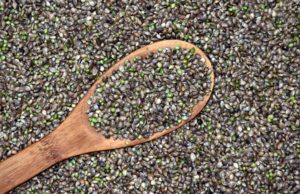There were several reasons why the 2020 supply fell from 2019 levels.
CBD prices are closing out 2020 with a bang as producers are eyeing 2021 for a true recovery. The Hemp Benchmarks division of New Leaf Services released its November report that noted an uptick in the aggregate prices for CBD Biomass. Prices increased from October to November in a range of 4% to 17%. CBD isolate jumped by 13% and CBG isolate rose by 5%. All other categories fell in price.
Despite that positive news, the report said that a member of its Price Contributor Network – a large scale hemp-cannabinoid extractor in Colorado – reported this month that 60% of the company’s customers from last year have gone out of business, impacting demand for CBD and other cannabinoid extracts. However, they also noted that they are getting more requests for specific blended products, such as aqueous solutions and those blended with MCT (medium chain triglyceride) oils.
The report found that a couple of factors had helped the 2020 crop prices versus the 2019 crop prices. First was the simple law of supply. Fewer farmers grew less hemp than in 2019 and potentially significant portions of planted acreage were not harvested due to crop failure or economic considerations. Additionally, extreme weather and natural disasters in some major hemp producing states are being blamed for the smaller supply.
“Nowhere near as many people grew this year, by far,” Pennsylvania-based Andrew Follett, a cultivator and retailer who also advises hemp companies on supply chain issues, told Hemp Benchmarks. “I have no idea about what next year is gonna look like. Nobody is talking much about the 2021 season. Everyone is on edge… waiting to see what happens with their 2020 crop, as far as price goes.” He added, “A lot less people are interested in setting up and purchasing equipment than last year. I think everybody got their feet a little wet and realized [hemp is] not easy.”
Katelyn Kesheimer, Auburn University Assistant Professor and Extension Specialist, told Vegetable and Specialty Crop News that many of the state’s hemp farmers have either plowed their crop under or are waiting on the sidelines for a price rebound. In late October, according to the website, Kesheimer reported that the state’s hemp crop was expected to be of mostly low quality due to disease, pest infestation, and late planting. “There’s not a lot of great quality flower out there for smokable hemp, so I think a lot of it will get extracted into oil,” she said, noting that many Alabama hemp farmers are still dealing with hemp from the 2019 season.
Ghosts of 2019
There was so much irrational exuberance for CBD that in 2019 it seemed there would be an unlimited demand for acres and acres of hemp. CBD was appearing in just about any product possible. Farmers jumped in to grow as much hemp as possible thinking this would be an easy weed-like crop that would command big prices. That didn’t happen. Instead the market was flooded with tons of hemp causing a glut and prices to tank.
Even big players like Canopy Growth (CGC) which made a big splash in 2019 about breaking ground on a huge hemp operation in New York, decided to stop this year. The company promised jobs and got a big tax break from the state. It had secured a 308,000 square foot facility on 48 acres. Canopy said it had enough hemp from 2019 to produce its CBD products and didn’t need anymore. It also stopped making payments on the farm.
All that 2019 material is aging and without the proper storage, its potency is diminishing. “There’s a lot of barns full of old biomass from last year,” Bruce Lilleston, the Oregon hemp grower, confirmed. “And what’s crazy is they didn’t keep it stored properly, and it degrades.”
Andrew Bish, founder of Hemp Harvest Works, COO of Bish Enterprises, and the founder of the Nebraska Hemp Industries Association, said in the report, “”Personally I think with the 2020 material we’re going to see a little higher price point and we’re going to start to see some stabilization there. There’s not as much of that material. The 2019 material, [producers] got to take the hit on it, they’re going to take a hit on it expiring or the price point. They got to bite the bullet on that one.”
Destroying 2020
There were several reasons why the 2020 supply fell from 2019 levels. Many farmers told Hemp Benchmarks that they chose to plant smaller plots. Pests also seemed to be an issue, which busts the myth that hemp is pest resistant. If it wasn’t bugs, farmers reported trouble with larger animals like rabbits and deer causing damage. Weeds were also a big problem. Wildfires on the West Coast caused issues with crops getting burnt or smoke damaged, while hurricanes on the Gulf Coast impacted those farmers.
Other farmers have learned how expensive harvesting hemp can be. Many have to hand harvest their crops, so if the prices aren’t there, it makes no sense to spend the money. The November report mentions John Fuller, a farmer in Ohio County, who grew 18 acres in 2019, but got burned by a producer who didn’t deliver on a contract to produce CBD oil. He dropped his crop to just five acres in 2020, but has plowed it under rather than spend the money harvesting it. The pandemic is also tempting farmers to leave hemp and return to food staples like corn and soybeans. Those prices have risen as consumers stockpile food.
On to 2021
“I feel more optimistic about 2021 that I felt in 2020,” said Bish. “The price point is bad, however, I think a lot of people are aware that some of this older material is moving its way through the market, and they’re seeing some higher price points on the newer material. It’s not great. It’s hard to grow at those prices with the current farm models.” Indeed, the focus has been on trying to lower production costs.
Texas A&M Agrilife Extension agronomist Calvin Trosle told Hemp Benchmarks about various experiments to lower costs and increase mechanization. “It appears that per-acre production costs might have come in well under the projected $3,500-$4,000 per acre,” he said. Research from Cornell University is cited in the report as noting that some farms are spending as much as $13,000 an acre in production costs.
“Fiber is going to come out this next year in a way that I think is going to be shocking for most people,” Trostle said. “I think when we look at the growing statistics for 2021, we’re going to be blown away. We’re going to have more acres planted in 2021 than we did in 2019 for sure.” The report noted that Bish estimated that somewhere between 350,000 to 400,000 acres of hemp fiber could be grown next season, fueled by large scale cultivators in Texas, Kansas, and Montana.
SOURCE Real Money®



